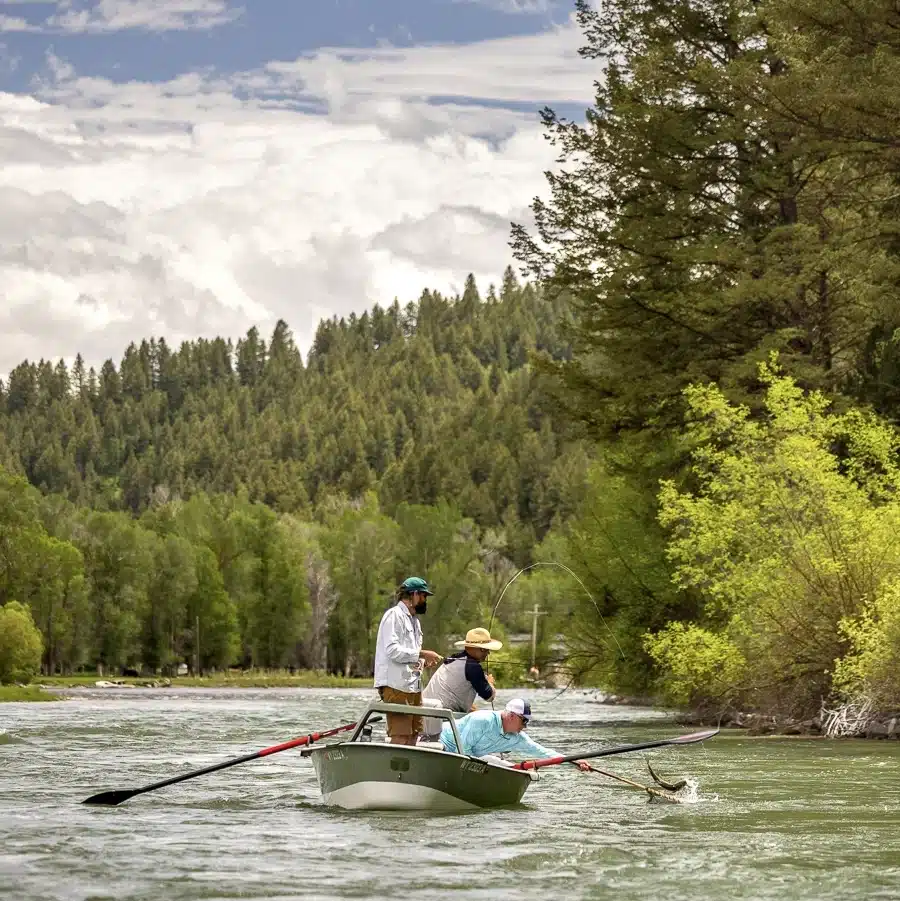Have Questions? Call Us (208) 483-2112
Riverflow
The South Fork of the Snake River is a tailwater river. It flows from the chilled depths of Palisades Reservoir above the community of Irwin, and water is delivered to the river based largely on agriculture needs downstream. The dam is managed by the U.S. Bureau of Reclamation as part of the Columbia River storage basin, but the U.S. The Geological Survey determines the river’s flow regime.
Generally, anglers can expect higher flows starting in the spring as downstream agricultural interests begin to plant potatoes and sugar beets, and as winter wheat starts to need irrigation for the coming growing season. Flows generally remain steady throughout the summer (actual flow levels will vary largely based on upstream supply), but they can, and do, change rapidly. The South Fork Lodge staff and its guides keep constant eyes on the river, because flow changes can change the way the river fishes. For example, a productive side channel one day might not fish as well because it’s receiving more or less water, thanks to the needs of downstream farms.
Flows will drop in late summer or early fall – usually by the middle of September. They drop for two reasons. First, once crops are harvested, there’s not as much need for irrigation. Second, water managers will start to store water in the complex of Columbia River Basin reservoirs so it’s available for irrigation next season.
Because the river is fed by the dam, it stays nice and cool, even during the hottest weather summer can throw at it. This keeps the river’s trout and whitefish happy and healthy all summer long – and anglers visiting South Fork Lodge are the fortunate recipients.
Resources
View current CFS and storage capacity in area reservoirs.
View the current hydrograph at Irwin, just below Palisades Dam.
View the current hydrograph at Heise, about 25 miles downstream from South Fork Lodge.

